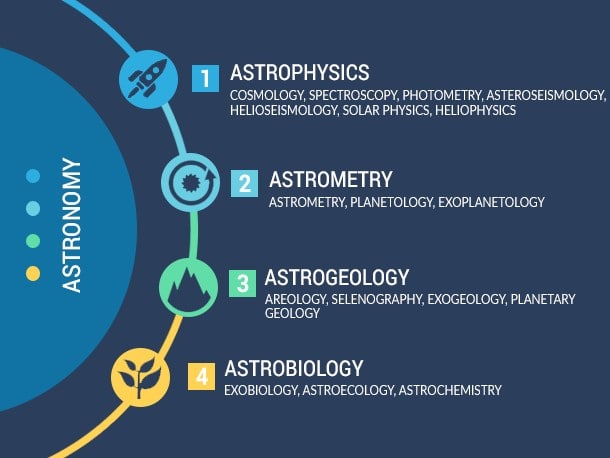The earliest documented observations of celestial phenomena. The ancient understanding of the cosmos. Examination of the historical development of theories about the structure of outer space, tracing their evolution from ancient times to the present. Methods used in astronomical observations.
| Rubric | Astronomy and Astronautics |
| View | Abstract |
| Language | Russian |
| Date of addition | 28.03.2020 |
| File size | 48.1 K |
Students, graduate students, and young scientists who utilize this knowledge base for their studies and work will greatly appreciate your contribution.
Within the field of Astronomy, specifically focusing on the following topic:
Astronomy holds the distinction of being the oldest scientific discipline.
4. The development of science until the end of the 19th century
5. Modern representation
List of used literature
Astronomy is a discipline that has been studied for centuries. The earliest recorded observations of the stars and planets date back to the 8th century BC. However, even earlier than that, in 3000 BC, Egyptian priests used their knowledge of the sky to predict the behavior of the Nile, which was crucial for the country’s economy. Similarly, in ancient China around 2000 BC, astronomers were able to accurately predict solar and lunar eclipses based on their understanding of the movements of the Sun and Moon.
The notion of the world’s structure has undergone significant transformations throughout centuries, accumulating the findings of repeated observations and the works of esteemed scientists, ultimately evolving into profound contemporary knowledge about the cosmos and the Earth.
Regrettably, numerous individuals in our era, despite having access to the magnificent legacy of their forefathers and being representatives of the 21st-century Earth dwellers, fail to make an effort to acquire new knowledge, let alone delve into the realms of astronomy and engage in astronomical research. Consequently, our generation, situated at an advanced stage of development, runs the risk of disregarding all the remarkable discoveries and regressing to a primitive state in its understanding of the Universe.
There is a vast amount of literature available on my selected subject. The challenge lies in selecting the most crucial information and presenting it concisely and coherently.
The objective of this essay is to outline the theory of outer space’s structure from ancient times to the present day, as well as to address the unresolved questions in astronomy.
Origins in Religion
Astronomy, much like other scientific disciplines, originated from the practical needs of humanity. In ancient times, nomadic tribes relied on celestial bodies such as the Sun, Moon, and stars to navigate during their wanderings. This necessity led to the development of observational skills and an understanding of celestial movements. Similarly, early farmers observed the correlation between the midday height of the Sun, the appearance of specific stars in the night sky, and the changing seasons. As human society progressed, the need for time measurement and chronology emerged, resulting in the creation of calendars. The practical value of this knowledge led to its preservation and transmission across generations. Thus, astronomy emerged as the oldest scientific discipline, with its roots deeply intertwined with religious practices and beliefs.
Archaeology uncovers traces of ancient human knowledge in our country, left behind by prehistoric people. These remnants reveal a particular fascination of individuals from the Stone Age with the celestial realm. Notably, archaeologists have discovered large stone slabs and small artifacts made from flint or other stones. These objects feature cup-shaped depressions arranged in various groupings. Some experts in the field have even suggested that these depictions may represent ancient star maps.
In the 1980s, P. A. Putyatin discovered two pebbles at a Neolithic site on the shore of Lake Bologovo. He believed that they were amulets for shepherds. Among the dimples on one of the larger pebbles, there is a clear depiction of the Big Dipper, with Mizar shown as a double star. A similar image of the Big Dipper, from the Bronze Age, can be seen on a forged copper needle in V. I. Byastov’s collection in southwestern Russia.
Archaeologists have discovered a number of stone structures known as megaliths (derived from the Greek words “megas” meaning “big” and “lithos” meaning “stone”). During the Stone Age, there were various tribes spread across Europe that shared a common culture and were known for their megalithic constructions. These tribes are often referred to as the builders of megaliths. Megalithic structures can be found in Europe, Asia, America, and Africa. One famous example is Stonehenge in Great Britain.
In 1771, Dr. John Smith conducted a meticulous measurement of all the stones at Stonehenge and concluded that it served not only as a temple dedicated to the Sun but also as a calendar. He observed that the number of stones in one of the circles, 30, is equivalent to the number of days in a lunar month. By multiplying this number by 12 (representing the months in a year), he arrived at 360, which corresponds to the number of days in the ancient solar year.
So, Stonehenge, along with other megaliths, served as a massive observatory designed to monitor the Sun and Moon’s movements. Its purpose was to establish the date of the summer solstice, when the Sun would rise above the Heel Stone, signifying the conclusion of the yearly cycle.
In ancient times, observations of celestial bodies were initially carried out without any instruments. Although these early methods were not particularly precise, they adequately met the practical requirements of the era.
The initial concepts regarding the cosmos were remarkably simplistic, as they were intricately linked to religious doctrines that were established upon the dichotomy of the world into two realms – terrestrial and celestial. While it is now common knowledge that the Earth is itself a celestial entity, in the past it was juxtaposed with the notion of being “earthly”. It was believed that a “firmament of heaven” existed, to which the stars were affixed, while the Earth was regarded as the immobile focal point of the universe.
Foundation of Philosophy
Aristotle’s Vision of the Universe
With the progression of human civilization, astronomy faced a growing number of challenges that required more sophisticated observation methods and precise calculations. Over time, basic astronomical instruments were invented, and mathematical techniques for analyzing observations were refined.
All the knowledge of the natural world, accumulated over centuries, along with practical and worldly experiences, were combined, organized, and logically developed in the first comprehensive model of the universe (refer to the Appendix), which was conceived in the 4th century BC by the eminent ancient Greek philosopher (and, essentially, the first physicist), Aristotle (384-322 BC).
The sphere of stars, known as the extreme and most distant eighth sphere, was perceived as the outermost realm. Aristotle proposed the notion that the stars remain stationary in relation to their sphere (this conclusion is also supported by the fact that the Moon always presents the same face to the Earth). These celestial bodies are fiery-hot entities, their temperature rising due to the friction generated as they swiftly traverse their incredibly remote stellar sphere in the sky. Anaxagoras held a similar belief. However, Aristotle posited that the heat and light emanating from the stars were not a result of their friction, but rather a consequence of the spheres themselves colliding with one another.
The astronomer describes the stars and planets as massive celestial bodies, while he perceives the Earth as comparatively small (based on the rapid motion of the starry sky during travel on its surface). His calculation of its circumference (over 70,000 kilometers) is the oldest recorded. More precise measurements (40,000 km) were later determined by Archimedes, Eratosthenes, and Hipparchus in the III – II centuries BC.
Consequently, Aristotle’s cosmological framework was, in a sense, a theory that relied on the understanding and observations of his time, which were somewhat crude. It was based on complete confidence in everyday observations.
The subject matter of astronomy is the universe, and thus, this scientific field frequently intersected with religion and was deemed the most controversial doctrine.
The theory of Aristotle and Ptolemy gained traction and was validated due to its alignment with Christian doctrines: that the Earth is the center of the Universe and that the celestial bodies were created to illuminate the Earth and embellish the sky. Any deviation from these beliefs was ruthlessly persecuted.
As a result, the church’s significant influence on scientific research hindered the progress of astronomy until the era of Galileo. During this period, rational advancements in astronomy were only made by the Arabs and peoples from Central Asia and the Caucasus, through the works of esteemed astronomers of that time, such as Al-Batani (850 – 929), Biruni (973 – 1048), Ulugbek (1394 – 1449), and others.
Without a doubt, in these circumstances, it was impossible for a person to cease contemplating the world around them. However, the focal points of intellectual inquiry shifted to monasteries, where any departure from the religious interpretation of phenomena was abruptly halted.
Astronomy continued to progress during the era of significant geographical discoveries (15th – 16th centuries). The newly emerging bourgeois class was keen on exploiting new territories and funded numerous expeditions to uncover them. After a prolonged period of isolation and disconnection from reality, science began to embrace a broader realm of collaboration with practicality.
In the past, the primary method of determining longitude involved intricate calculations based on tables that determined the positions of the Moon at a specific time and location. However, these calculations were extremely complex and required simplification. As the field of astronomy grew in popularity, there was a need for an accurate theory on the movements of the Sun and Moon to ensure the accuracy of the calendar. For instance, the church mistakenly set the date of the vernal equinox as March 21, causing it to fall behind the actual date by ten days!
4. Advancement of scientific knowledge until the late 19th century
The 18th century is renowned for its rapid advancements in navigation. The need for precise geographical maps led to the search for a method of measuring longitudes at sea. Several European nations sought a solution to this problem and offered substantial rewards to the most innovative inventors. As a result, the first state observatories in Europe were established, including those in Copenhagen, Paris, and Greenwich.
John Flemish (1646-1719) served as the inaugural director of the Greenwich Observatory, where he held the esteemed position of Royal Astronomer. Regrettably, the government did not provide financial support to Flemish, and were it not for his inheritance from his father and influential connections, he would have been unable to furnish the observatory with top-of-the-line equipment. It was under his guidance that the first star catalog was compiled, utilizing precise angular instruments to analyze telescope observations.
Newton utilized Flemish’s data to formulate a theory regarding the moon’s movement, which subsequently proved to have practical applications. With this knowledge, any ship’s captain could determine the exact Greenwich Mean Time by referencing the moon’s position. Armed with local time acquired from star observations, the captain could effortlessly calculate the longitude of their vessel.
Halley Edmund Halley, an English astronomer and geophysicist, who was also the second Astronomer Royal, made a groundbreaking discovery in 1705 based on Newton’s gravitational theory. He established the periodicity of comets and accurately predicted the return of the comet that was observed in 1682. Additionally, Halley was the first to provide scientific evidence for the cosmic nature of bolides. In 1718, he made another significant finding, as he noticed that certain stars had undergone slight changes in their positions since ancient times. This observation indicated that the so-called stationary luminaries were actually in motion relative to one another. Halley’s discovery was later confirmed by other astronomers, leading to a new field of study focused on the proper motions of stars.
Newton’s theory of the Earth’s flattening was confirmed by the Paris Academy of Sciences’ expedition (1735-1743) to measure the length of a degree in Peru and Lapland. Following that, Bradley published a highly accurate star catalog consisting of 3,268 stars. In 1761, M. V. Lomonosov made the discovery of the atmosphere on Venus.
In the 19th century, there was an increased activity in compiling catalogs of stars, nebulae, and other celestial objects. The brightest nebulae are now identified by their numbers in S. Messier’s catalog. Additionally, many nebulae and star clusters are still identified by their NGC numbers, as listed in Dreyer’s New General Catalog of Nebulae and Star Clusters. This period also saw advancements in astrophysics, with the study of the evolution of celestial bodies and the physics of cosmic processes.
5. Contemporary Concepts
The 20th century commenced with the dethronement of Newton’s mechanics as the universal principle governing the universe. Two monumental discoveries, namely quantum mechanics by Planck – Bohr – Dirac and Einstein’s theory of relativity, brought about a complete transformation of the existing worldview. These breakthroughs also had a profound impact on the field of astronomy. In 1922, Alexander Friedman proposed the theory of the expanding universe, which remains widely accepted today. Astrophysics also witnessed significant progress during this period. The contributions of Schwarzschild, Eddington, Jeans, Shepley, Shklovsky, Zel’dovich, and numerous others have collectively shaped our current understanding of the origins and evolution of stars and galaxies.
Karl Schwarzschild (1873-1916), a German astronomer, was one of the pioneers in theoretical astrophysics. In 1906, he formulated a theory to explain how radiant energy is transferred within a star. This groundbreaking discovery led him to develop a set of equations that describe how radiant energy moves from the Sun’s core to its outer layers. By solving these equations, he was able to determine the temperature of each layer inside the Sun. Additionally, Schwarzschild formulated the fundamental equations of stellar statistics and provided a comprehensive solution to these equations. He independently derived the principles of quantization, which laid the foundation for the study of quantum mechanics. Schwarzschild also made significant contributions to the theory of the Stark effect, which explores the interaction between electric fields and light, and he made strides in developing the quantum theory of molecular spectra. In 1911, he offered an explanation for the distribution of brightness in the tail of Halley’s comet, attributing it to the mechanism of fluorescent luminescence of molecules.
Scientists have successfully determined the dimensions and overall mass of our Galaxy, and have also made the fascinating discovery that the Sun is situated quite far from its center. The rotation of the Galaxy was initially detected through statistical analysis conducted by the esteemed Russian astronomer M. A. Kovalsky in 1859, and was later investigated in great detail by the renowned Dutch astronomer J. Oort in 1927.
It is worth noting the significant contributions made by Edwin Hubble, an American astronomer who lived from 1889 to 1953. Hubble’s name is often mentioned in the same breath as Nicolaus Copernicus, as both individuals played pivotal roles in revolutionizing our understanding of the universe. For more information, please refer to the Appendices, specifically Figure 12 on page 26.
In 1923-1924, he provided evidence for the composition of the Andromeda Nebula and two other spiral nebulae. By discovering cepheids in these nebulae, he was able to determine the distance to the nearest one at 900,000 light-years, which confirmed the existence of the observed Universe. A year later, he created the first classification system for galaxies, which remains largely unchanged today.
As we enter the twenty-first century, our understanding of the structure of the Universe is still incomplete. There are several unanswered questions that our scientists are working to solve:
– How were the planets, their satellites, and rings formed in our solar system?
– What is the nature of planets in other star systems?
– Can we fully comprehend the life cycles of stars?
– What is the form of matter that contains the hidden mass of the universe?
– How were different types of galaxies formed?
– What new insights do neutrino streams and gravitational waves bring to the universe?
– Is it possible to comprehend the mystery of the universe’s birth and predict its future fate?
Therefore, there are still unexplored areas in astronomy that await the discovery by scientists.
Looking back at the work that has been done, it can be said that practical needs have always been the driving force behind any discoveries. Even in primitive society and the earliest civilizations, people recognized the importance of understanding celestial bodies in their daily lives.
During the Middle Ages, there was a certain stagnation in the development of astronomy due to the strong desire of the people to uphold traditions. By rejecting new theories and ideas about the Universe, even those that were theoretically and experimentally proven, humanity hindered the progress of ancient science.
When the church legitimized the Aristotle-Ptolemy theory, it became nearly impossible to change people’s minds, despite any contradicting evidence (due to the immense power of religion). The Christian principles aligned perfectly with the belief in the Earth’s central and unshakable position in the world. Therefore, Copernicus’ heliocentric system, which had been discussed in antiquity, represented a true revolution and a complete overthrow of old beliefs.
The advent of a new era has propelled astronomy to new heights of development – it has become evident that progress is essential and that the refinement and updating of outdated data is imperative. The creation of various star maps, catalogs of celestial objects, and, in the 20th century, the construction of cutting-edge observation equipment, as well as the first forays into space and the launch of satellites, have bridged the gap between ancient notions of the universe and modern theories regarding its structure.
Despite the myriad challenges and obstacles that have dotted the extensive history of astronomical inquiry, scientists have remained steadfast in their pursuit, unwavering in their commitment to their ideas and perspectives. We owe them a debt of gratitude for their diligent efforts and perhaps should strive to emulate their example.
astrological celestial cosmos
References:
1. The Great House of Mankind. – Moscow: Children’s Literature, 1966. – 422 p.
2. Gurshtein A.A. – Unraveling the Secrets of the Celestial Sphere: A Guide for Students. – 2nd ed., revised and expanded. – M.: Prosveshchenie, 1984. – 272 p.
3. Children’s Encyclopedia. Vol. 8. Astronomy. – 2nd edition, revised – M.: Avanta+, 2000. – 688 p.
4. Astronomy in Ancient Times [Electronic resource]//Astronomy portal. -Girin Yu. History of Astronomy: Important Dates, Biographies, Works [Electronic resource]//Kabinet: History of Astronomy. – M.: 2006. –
5. The Science of Astronomy [Electronic resource]// ASTRONOMY
Other documents with similar content
Overview of astronomy’s historical milestones. Evolution of astronomical instruments. Advancements in astronomical instrument designs in Ancient Greece and China. The popularity of armillary spheres. The advent of telescopic observations and astronomical clocks.
Research paper [1.1M], uploaded on May 26, 2010
Exploring the origins of astronomy and the earliest recorded astronomical observations. The development of the geocentric model by Greek astronomers, including the geometric theory of epicycles, which laid the foundation for Ptolemy’s world system in the 2nd century AD. Copernicus’ heliocentric model of the universe.
Presentation [794.1K], uploaded on May 28, 2012
The subject and tasks of astronomy. Characteristics of astronomical observations. The functioning principle of the telescope. The daily movement of stars that can be seen. The definition and types of constellations. The ecliptic and the planets that appear to move across the sky. Star charts, celestial coordinates, and time.
abstract [40.5 K], added 13.12.2009
Astronomical observations serve as the primary means of studying celestial objects and phenomena. The study involves observing solar activity, Jupiter and its moons, comets, meteors, solar and lunar eclipses, as well as man-made satellites orbiting the Earth.
abstract [31.9 K], added 17.04.2012
The idea of the universe as a cosmic expanse filled with celestial entities. Depictions of the origin and development of planets and stars. Categorization of celestial entities. The arrangement of the solar system. Arrangement of the Earth. Creation of the hydrosphere and biosphere. Placement of continents.

Astronomy, as a branch of science, focuses on the study of celestial bodies. It delves into the movement, structure, and evolution of these celestial bodies and their systems. Moreover, astronomy applies the principles and laws it discovers to practical applications that benefit humanity.
This field of study grants us the opportunity to gaze into the depths of our magnificent universe, allowing us to gain a better understanding of the countless mysteries and enigmas it holds.
It is worth noting that astronomy is the oldest of all sciences, with its earliest foundations originating in ancient Babylon and Egypt thousands of years ago.
From the very beginning, early astronomers noted that both the Sun and the stars have the ability to indicate the time of day. For instance, at noon, the Sun reaches its highest point in the sky for the day. By observing the changing phases of the moon (crescent, full, etc.) and the positions of the Sun and other celestial bodies, one could determine longer periods of time and establish a calendar. Nomads and sailors became adept at using the stars to determine the directions of the horizon.
By closely observing the daily rise and set of the Sun and Moon, as well as the apparent movement of the stars in relation to the horizon, people began to believe that all celestial bodies revolved around the stationary Earth. The earthly realm and the heavenly realm were seen as opposing forces.
On the contrary, astronomy has provided evidence that the Earth is a celestial object, known as a planet, that orbits the Sun. Stars, which are made up of luminous gas, are similar to the Sun in their nature. However, they are significantly larger than both the Earth and the Sun in many instances.

When the constellation Leo contains a bright planet, it creates a fascinating scene in the night sky. This showcases the diversity and wonder of the celestial bodies beyond our own planet, reminding us that life may exist elsewhere in the universe. Gaining knowledge in the field of astronomy allows us to expand our scientific understanding of the world around us.
Astronomy is widely regarded as one of the oldest sciences practiced by mankind. Its origins can be traced back to ancient times, where evidence of ancient people’s fascination with the stars is found in myths and rock paintings. Despite the lack of a written language during this period, the study of the stars and celestial phenomena played a significant role in shaping early human understanding of the world.
Almost all tribes that inhabited different parts of the planet in prehistoric times possessed basic astronomical knowledge.
Around 3000 BC, the ancient Egyptians developed a calendar based on astronomical observations and also utilized solar and water clocks.
The Sumerians, around 3500 BC, left behind written records of their astronomical observations on clay tablets. These tablets include the names of the constellations that the Sumerians identified in the night sky. It is also known that they divided the year into four seasons and used a lunar calendar in their daily lives.
Ancient China has a rich history of conducting regular astronomical observations, as documented in various chronicles. These observations include the tracking of comets, solar and lunar eclipses. Remarkably, Chinese astronomers were able to predict these celestial events as early as 2000 BC. In fact, during the 12th century BC, an astronomical observatory was constructed in China, with remnants still in existence to this day.
The field of astronomy experienced a remarkable resurgence during the Renaissance period. It was during this time that Nicolaus Copernicus introduced the heliocentric system of the world in 1543. In 1609, Galileo Galilei began making telescopic observations of the heavens, while Johannes Kepler discovered three laws of planetary motion between 1609 and 1618. Kepler also made significant contributions to the understanding of universal gravitation, which was further developed and generalized by Isaac Newton in 1684.
Following the invention of photography in the mid-19th century and, more importantly, the exploration of spectral analysis, a new branch of astronomy emerged – astrophysics – which provided the opportunity to examine the physical and chemical characteristics of celestial bodies.
With the launch of the first artificial satellite on October 4, 1957, astronomy entered a new era, becoming a multi-disciplinary science. The introduction of computer technology and subsequent advancements in data processing have allowed for the discovery of vast amounts of new information. These technological advancements now enable the modeling and simulation of complex, long-term astronomical phenomena and processes.
It is evident that the progress of astronomy is a continuous journey.
Also read:
Astronomy – the oldest of the sciences: An Essay with Illustrations
Current Popular Topics
This piece of writing is not solely focused on criticizing negative human qualities; its storyline was inspired by the events of the War of 1812, which greatly influenced Krylov. It is widely known that Kutuzov himself read this fable during that time.
Truth and literary morality always coexist and are practically inseparable, as expressed by Vasily Shukshin.
Julius Klever, a renowned landscape painter of the late 19th century, has both German and Russian roots. One of his popular works includes…
Astronomy, which is a captivating discipline, falls under the realm of natural sciences. Its focus lies in investigating the characteristics and attributes of celestial bodies that are within human reach. The origins of astronomical studies can be traced back to ancient times, even predating our era. Various civilizations such as Babylon, Egypt, Greece, the Roman Empire, and China have documented a wealth of knowledge about celestial bodies. Throughout history, astronomy has been intertwined with astrology, a non-scientific field. Nevertheless, this did not hinder thinkers from establishing the groundwork for the future development of this science. The primary objective of astronomy, even in the present day, remains the examination of cosmic bodies, their properties, and the laws that govern their existence.
Astronomy, as a field of study, emerged during the XV-XVII centuries. The heliocentric model proposed by Copernicus, the pioneering work of Giordano Bruno, and the invention of the telescope by Galileo all played significant roles in the advancement of scientific understanding in this discipline. Additionally, Isaac Newton’s groundbreaking discovery of the law of universal gravitation had a profound impact on the formation of astronomy. The XVIII century witnessed the remarkable contributions of the English scientist William Herschel, who made numerous breakthroughs in the study of the solar system. Among his notable achievements are the identification of the planet Uranus and its satellites, as well as the discovery of several satellites of Saturn. Herschel’s research also shed light on the motion of the solar system. The XIX century marked a period of extensive scientific progress in astronomy, driven in part by humanity’s exploration of the fundamental building blocks of matter. The discovery of elementary particles and the elucidation of their governing laws had a profound influence on the study of the cosmos and celestial objects.
The advancements in modern astronomy are founded on the utilization of comprehensive knowledge about all types of waves. Thanks to significant scientific and technological advancements, new avenues in the advancement of astronomy are emerging, including X-ray astronomy and gravitational astronomy. Astronomers are constantly uncovering novel celestial entities for investigation. Among these, black holes, neutron stars, and quasars stand out as particularly intriguing.
Astronomy holds immense potential for the future. As the technological capabilities of humanity continue to expand, scientists are able to peer deeper into the vastness of space. The prospect of discovering increasingly more celestial objects instills great optimism in humanity’s quest to unravel the mysteries of the cosmos.
Astronomy
A Selection of Intriguing Essays
During the summertime, when the planet is scorching, an individual strolls through a meadow and inhales the sultry air, which playfully tickles their nostrils. The sun shines so brilliantly and cheerfully that it also illuminates one’s spirit, making it beautiful and joyous.
This piece of work belongs to the philosophical realm of the author’s writing and stands as one of their primary creative accomplishments. The narrative structure of the tale revolves around a series of events taking place over the course of three days.
Since ancient times, humans residing on Earth have gazed up at the sky, pondering about the mysteries that unfold above. They have observed the transition from day to night, the changing of seasons, and have encountered a myriad of natural phenomena and weather irregularities.
Initially, our predecessors perceived all of this solely as a divine foundation. However, once they grasped the patterns behind the emergence of certain phenomena, and realized that this knowledge could prove useful for agriculture and overall survival, they started to carefully observe the celestial sphere. And thus, the science of astronomy was born.
This occurred several millennia before the Common Era. It is during this era that scholars attribute the construction of Stonehenge in England, which likely functioned as an ancient observatory. Additionally, the ancient Egyptian calendars discovered in Semuta’s tomb were crafted around the 2nd century BCE.
Consequently, the ancients were already aware of the existence of 24 hours in a day and 365 days in a year. They closely monitored the sunset and sunrise, the positions of the moon and stars in the sky, and possessed a basic understanding of the changing seasons.
The advancement of astronomy began in ancient Greece, with Pythagoras proposing that our planet is spherical and Aristarchus of Samos suggesting that the Earth may orbit the Sun. However, for a considerable period, this viewpoint was disregarded, and the geocentric model by Ptolemy was widely accepted in the scientific community. It wasn’t until the 16th century when Nicolaus Copernicus validated Aristarchus of Samos’ theory, ultimately shifting the paradigm of understanding our solar system.
Modern astrology came into existence with the recognition of the heliocentric system of the world. With the invention of the telescope and the confirmation of the law of universal gravitation, among other significant scientific advancements, this field of study has reached its pinnacle of development. Today, astrology not only allows for the examination of the Sun and the Moon, but also provides insights into the other planets. It enables the observation of stars, comets, and asteroids, as well as the exploration of nebulae, galaxies, and black holes.
Origin, Development, and Ideological Significance of the Science of the Universe
Submitting Your Work to the Knowledge Base Made Easy
Students, graduate students, and young scientists who utilize the knowledge base for their studies and work will greatly appreciate your contribution.
1. Emergence and Primary Phases of Astronomy
2. Scope and Objectives of Astronomy
3. Branches of Astronomy
4. Practical and Ideological Importance of Astronomy
5. Fundamental Principles and Sources of Astronomical Research
1. Origin and Primary Phases of Astronomy
Astronomy, being one of the most ancient fields of study, holds a significant place in the history of human knowledge. The earliest documented astronomical observations, which are undoubtedly credible, date back to the 8th century B.C. However, there is evidence to suggest that even as far back as 3000 B.C., Egyptian priests astutely noticed a correlation between the annual flooding of the Nile, a crucial factor in the country’s economic stability, and the reappearance of Sirius, the brightest star in the night sky, after a two-month period of being hidden by the Sun’s rays. These keen observations by the Egyptian priests enabled them to accurately determine the duration of the tropical year.
In ancient China, around 2,000 years B.C., Chinese astronomers possessed a deep understanding of the movements of the Sun and Moon. This knowledge allowed them to accurately predict solar and lunar eclipses. The study of astronomy, like all scientific disciplines, originated from the practical needs of humanity. In particular, the nomadic tribes of early societies required a means of orienting themselves during their travels, and they achieved this by observing the Sun, Moon, and stars.
Similarly, primitive farmers recognized the importance of tracking the changing seasons for successful field work. They observed that the height of the Sun at noon and the appearance of certain stars at night correlated with the seasons. As human society advanced, the necessity for measuring time and establishing calendars became apparent.
All of this information could provide and provided observations on the motion of the celestial bodies, which were initially conducted without any tools and were not very precise, but still met the practical requirements of the time. Astronomy, the study of celestial objects, originated from these observations.
As human society progressed, astronomy encountered increasingly complex challenges that required more advanced observation techniques and more accurate calculation methods. Over time, more sophisticated astronomical instruments were invented and mathematical methods for processing observations were developed.
Astronomy was highly advanced in ancient Greece. Greek astronomers, including the prominent Hipparchus in the 2nd century BC, developed a geometric theory of epicycles to explain the apparent movements of the planets. This theory formed the foundation of Ptolemy’s geocentric world system in the 2nd century AD. Although fundamentally incorrect, Ptolemy’s system was able to approximate the positions of planets in the sky and served practical purposes for several centuries. Ptolemy’s world system marked the culmination of ancient Greek astronomy’s development.
The rise of feudalism and the spread of Christianity had a significant impact on the decline of the natural sciences, leading to a stagnation in the advancement of astronomy in Europe for many centuries. Throughout the dark era of the Middle Ages, astronomers were primarily focused on observing the apparent movements of planets and reconciling these observations with the widely accepted geocentric model established by Ptolemy. However, it is important to note that significant advancements in astronomy were made by Arab and Central Asian peoples, as well as those in the Caucasus region, during this time. Prominent astronomers such as Al-Battani (850-929), Biruni (973-1048), Ulugbek (1394-1449), and others played a vital role in the rational development of astronomy within these regions.
During the rise and establishment of capitalism in Europe, marking the transition from feudal society, astronomy experienced significant advancements. These advancements were particularly rapid during the era of major geographical explorations in the 15th and 16th centuries. The emerging bourgeoisie class, driven by their desire to exploit new territories, organized numerous expeditions to uncover these lands. However, long-distance voyages across the ocean necessitated more precise and simplified methods of orientation and time calculation than what the Ptolemaic system offered. The progress of trade and navigation demanded urgent enhancements in astronomical knowledge, specifically in the field of planetary motion.
The advancement of productive forces and the practical requirements, on one side, and the accumulated empirical material, on the other hand, set the stage for a revolution in the field of astronomy, which was brought about by the brilliant Polish scientist Nicolaus Copernicus (1473-1543), who formulated his heliocentric model of the universe, published in the year of his demise.
Copernicus’ doctrines marked the onset of a fresh phase in the progress of astronomy. Kepler uncovered the principles governing planetary motion between 1609 and 1618, while Newton introduced the law of universal gravitation in 1687.
The emerging field of astronomy had the capability to observe not just the visible, but also the real movements of celestial objects. Its many impressive achievements in this area reached a pinnacle in the 1800s with the finding of Neptune, and more recently with the precise calculation of the paths of man-made celestial bodies.
The next significant stage in the advancement of astronomy started relatively recently, in the mid-19th century, with the introduction of spectral analysis and the implementation of photography in the field. These techniques allowed astronomers to investigate the physical properties of celestial bodies and expand the scope of their studies. This gave rise to the field of astrophysics, which experienced remarkable growth in the 20th century and continues to progress rapidly today. The 1940s saw the development of radio astronomy, and in 1957, new groundbreaking research methods emerged, utilizing artificial celestial bodies. This eventually led to the establishment of a distinct branch of astrophysics known as X-ray astronomy.
The importance of these astronomy accomplishments cannot be overstated. The launch of artificial satellites around Earth in 1957 by the USSR, the establishment of space stations in 1959 by the USSR, the first human space flights in 1961 by the USSR, and the first human landing on the Moon in 1969 by the USA were all monumental events for humanity. These were followed by the retrieval of lunar soil to Earth, the landing of descent vehicles on the surfaces of Venus and Mars, and the sending of automatic interplanetary stations to the more remote planets of the solar system.
2. The Field and Objectives of Astronomy
Astronomy is a scientific field that focuses on understanding the universe, including the motion, structure, origin, and development of celestial bodies and their systems. It examines various celestial objects such as the Sun, stars, planets, satellites, comets, meteoric bodies, nebulae, and star systems, as well as the matter that exists in the space between them.
By investigating the structure, development, and movements of celestial bodies, astronomy provides insights into the overall structure and evolution of the universe. The term “astronomy” originates from two Greek words, “astron” meaning star or luminary, and “nomos” meaning law.
In its pursuit, astronomy has three primary objectives that require continuous exploration and analysis:
1. Celestial bodies in space are studied to determine their apparent and actual positions as well as their motions. This also involves determining their size and shape.
2. The physical structure of celestial bodies is examined to understand their chemical composition and physical conditions on the surface and in their interior. This involves studying factors such as density, temperature, and more.
3. The origin and development of celestial bodies are investigated to understand their possible future fate. This includes studying individual celestial bodies and their systems.
Long observations, dating back to ancient times, and the application of mechanics laws that have been known for about 300 years are used to solve the questions related to the first problem. As a result, we have the richest information in this area of astronomy, especially for celestial bodies that are relatively close to the Earth.
We have limited knowledge about the physical structure of celestial bodies. It was only a little over a hundred years ago that we began to find answers to some of the questions related to this topic. In recent years, we have made significant progress in solving the main problems.
The third problem in this field is even more challenging than the previous two. We still do not have enough observational data to fully understand it. Therefore, our knowledge in this area is primarily based on general considerations and a few hypotheses that seem plausible.
3. Division of astronomy
Modern astronomy can be divided into several distinct sections, each closely connected to the others. However, this division is somewhat arbitrary.
The main sections of astronomy include:
1. Astrometry – the study of space and time measurement. It encompasses:
a) The field of spherical astronomy focuses on developing mathematical techniques to calculate the apparent positions and movements of celestial bodies using various coordinate systems. It also includes studying the theory of how the coordinates of stars change over time.
b) Fundamental astrometry involves determining the coordinates of celestial bodies through observation, creating catalogs of stellar positions, and calculating important astronomical constants. These constants help account for the regular changes in the coordinates of stars.
c) Practical astronomy provides methods for determining geographic coordinates, azimuth directions, and accurate time. It also covers the instruments used in these processes.
(2) The field of theoretical astronomy offers techniques for determining the paths of celestial bodies based on their apparent positions, as well as methods for calculating the apparent positions of celestial bodies using the known elements of their orbits (known as the inverse problem).
(3) Celestial mechanics, on the other hand, focuses on studying the motion of celestial bodies under the influence of universal gravitational forces. It aims to determine the mass and shape of celestial bodies, as well as the stability of their systems.
These three areas of study are primarily concerned with addressing the fundamental challenges of astronomy, and are often referred to as classical astronomy.
(4) Astrophysics, on the other hand, delves into the structure, physical properties, and chemical composition of celestial objects. This field can be further divided into:
a) Practical astrophysics involves the development and application of practical methods, instruments, and devices for astrophysical research. b) Theoretical astrophysics aims to explain observed physical phenomena based on the laws of physics.
A variety of subfields within astrophysics employ specific research methods.
5. Stellar astronomy focuses on the spatial distribution and motion of stars, stellar systems, and interstellar matter, taking into account their physical characteristics.
These two branches primarily address the second problem of astronomy.
6. Cosmogony pertains to the origin and evolution of celestial bodies, including our Earth.
7. Cosmology investigates the general patterns of structure and development in the universe.
Building upon the vast knowledge acquired about celestial objects, the final two segments of astronomy tackle its third dilemma.
4. The practical and ideological significance of astronomy
Astronomy and its methodologies hold immense value in the contemporary society.
Matters pertaining to time measurement and the dissemination of precise time information to humanity are currently addressed by specialized laboratories known as time services, typically established within astronomical institutions.
Navigation and aviation, as well as astronautics, still heavily rely on astronomical methods of orientation. These methods are also essential in the calculation and creation of calendars, which play a significant role in the national economy. Additionally, astronomical knowledge is crucial in the compilation of geographical and topographical maps, predicting sea tides, and determining gravity at different locations on Earth for the purpose of discovering mineral deposits. Furthermore, the study of celestial bodies allows astronomers to investigate matter in states that cannot be replicated in terrestrial laboratories. Therefore, astronomy, particularly astrophysics, which is closely intertwined with physics, chemistry, and mathematics, contributes to advancements in these fields, serving as the foundation for modern technology. It is worth noting that the question of intra-atomic energy was initially raised by astrophysicists, and the creation of artificial celestial bodies like satellites, space stations, and ships would not be possible without astronomical knowledge. Astronomy also plays a crucial role in combating idealism, religion, mysticism, and superstition. It greatly contributes to the development of a correct dialectical-materialist worldview by determining the Earth’s position and our place in the Universe. However, the observation of celestial phenomena alone does not provide direct insight into their true causes. Without scientific knowledge, this often leads to incorrect explanations, superstitions, and the deification of celestial bodies. In ancient times, the Sun, Moon, and planets were worshipped as deities, and many superstitions were associated with solar and lunar eclipses, comets, meteors, and meteorite falls. Astronomy, through the study of celestial phenomena and the exploration of the nature, structure, and development of celestial bodies, demonstrates the materiality of the universe and its natural, orderly progression through time and space without the involvement of supernatural forces. Throughout history, astronomy has been and continues to be a battleground between materialistic and idealistic worldviews. Nowadays, the struggle between these two philosophies mainly revolves around more complex questions and problems concerning the structure of matter, the universe’s origin, development, and ultimate fate, both at the individual and cosmic scale.
5. The foundation and origin of astronomical investigation
Astronomy is built upon observation. Observations provide the fundamental data that enable us to comprehend various astronomical phenomena. It is essential to make meticulous measurements and calculations in order to explain these phenomena and shed light on the actual circumstances that gave rise to them. For instance, we may perceive all celestial bodies as being equidistant from us, with the Earth being motionless and positioned at the center of the universe. We may also believe that all celestial objects orbit around the Earth and that the Sun and the Moon are of equal size. However, only through meticulous measurements and thorough analysis can we dispel these misconceptions.
The primary source of information regarding celestial objects is electromagnetic waves, which are emitted or reflected by these objects. By determining the paths along which electromagnetic waves reach the Earth, it becomes possible to study the apparent positions and movements of celestial bodies. Analyzing the spectrum of electromagnetic radiation enables scientists to assess the physical condition of these objects.
Another unique aspect of astronomical research is the fact that, until recently, astronomers lacked the ability to conduct experiments (with the exception of studying meteorites that have fallen to Earth and radar observations). All astronomical observations were conducted solely from the Earth’s surface.
Nevertheless, the commencement of space exploration in our nation in 1957, with the introduction of the inaugural man-made satellite, marked the onset of the space research era. This groundbreaking development facilitated the application of other scientific disciplines such as geology, geochemistry, and biology in the field of astronomy. Although astronomy remains predominantly an observational science, it is only a matter of time before astronomical observations are conducted not only from interplanetary stations and orbital observatories, but also from the lunar surface or other celestial bodies.
Such documents
Characteristics of astronomy as a scientific discipline. Its philosophical significance, shaping the worldview of individuals and its interconnectedness with other fields of study. The primary objectives related to the examination of the movements, structure, origin and evolution of celestial bodies and their distinctive features of resolution.
Ancient conceptions of the Universe. Subjects of astronomical investigation. Computations of celestial phenomena based on Ptolemy’s theory. The impact of astronomy and astrology. The heliocentric model of the universe with the Sun at its center. G. Bruno’s contributions to the field of astronomy.
Topics covered in this astronomy class include cosmogony, cosmology, and astronomy. We will explore various hypotheses about the origins and evolution of the solar system, as well as the relationship between the Earth and the Sun. Additionally, we will examine the composition and size of the Sun, planets, and their satellites, as well as the interplanetary medium and asteroids.
During this journey into space, we will delve into the nature of the universe and the evolution and motion of celestial bodies. We will study the discovery and exploration of planets and learn about the contributions of influential figures such as Nicolaus Copernicus, Giordano Bruno, and Galileo Galilei to our understanding of the structure of the solar system. We will also explore the movement of the Sun and planets on the celestial sphere.
This class will also delve into the history of ideas about the Universe. We will examine various cosmological models of the origin of the Universe, including the heliocentric system proposed by Nicolaus Copernicus. We will also discuss the birth of modern cosmology and explore concepts such as the Big Bang and the “hot Universe” models. Finally, we will touch on Heisenberg’s uncertainty principle and its relevance to cosmology.
Horizontal system of celestial coordinates. Equatorial system of celestial coordinates. Ecliptic system of celestial coordinates. Galactic system of celestial coordinates. Change of coordinates as the celestial sphere rotates. Use of different systems of coordinates
Astronomy is the oldest of all natural sciences, with a rich history of its evolution. The observation of the Sun and the Moon’s visible movements in Ancient China dates back to 2000 BC. The world system proposed by Ptolemy. The birth of astrophysics as a scientific discipline. The remarkable advancements made in modern astronomy.

One of the oldest and most ancient sciences is astronomy. It originated from the practical necessities of humanity. Since the existence of humans on the planet, they have perpetually demonstrated curiosity in the phenomena they observed in the celestial sphere. As far back as ancient times, they made observations and drew connections between the motion of celestial bodies in the sky and recurring alterations in the climate.
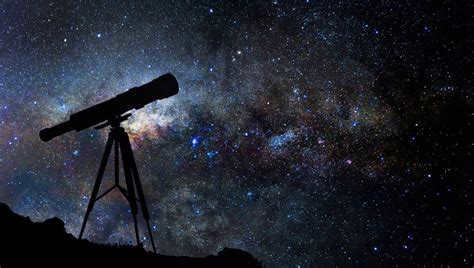
What are the origins of the science of astronomy?
- When and where did astronomy first emerge?
- Who were the pioneers of astronomy?
- What is the focus of astronomy’s teachings?
- What led to the abolition of astronomy?
- What is the branch of astronomy that studies celestial objects called?
- Why was astronomy abolished?
- What are the defining characteristics of astronomy?
- How does astronomy differ from astrology?
When and where did the science of astronomy originate?
The science of astronomy originated in ancient China around 2,000 years B.C. During this time, Chinese astronomers had a deep understanding of the apparent movements of the Sun and Moon, allowing them to accurately predict solar and lunar eclipses. Astronomy, like other sciences, emerged out of humanity’s practical needs.
When did the first origins of astronomy begin?
Astronomy is an ancient science that traces its origins back to around the 8th century BC. Historical records confirm the earliest mentions of astronomical observations during this time.
Tycho Brahe, a Danish astronomer and one of the pioneers of modern astrometry, was born on December 14, 1546, marking his 470th birthday.
What are the stages in the development of astronomy?
- Stages in the development of astronomy
- First Ancient World (BC).
- II Pre-Telescopic (our era until 1610)
- III- Telescopic (1610-1814)
- IV Spectroscopy (1814-1900)
- V-Modern (1900-present)
Who established the principles of astronomy?
| Johannes Kepler | |
| Portrait of Kepler in 1620, author unknown | |
| Birth name | German. Johannes Kepler |
| Date of birth | December 27, 1571 |
What is the purpose of studying astronomy?
Astronomy not only contributes to humanity’s understanding of the world around us, but also provides practical applications that improve everyday life for everyone.
Why is astronomy important?
Astronomy enables us to address fundamental inquiries about our location, origin, and future trajectory. Moreover, satisfying humanity’s innate curiosity to comprehend the cosmos also yields the foundational knowledge necessary for uncovering crucial technologies and services that enhance our daily experiences.
What was the purpose of astronomy in ancient times?
Astronomy held immense significance for ancient civilizations as it facilitated navigation and spatial orientation by relying on celestial bodies. Additionally, the lunar cycle served as a timekeeping mechanism, while the movement of the stars indicated the changing seasons. Consequently, astronomy played a pivotal role in the practicalities of everyday life.
What is the purpose of studying astronomy?
Astronomy, which is one of the oldest sciences, explores celestial bodies like stars, planets, comets, nebulae, star clusters, and galaxies. It also delves into phenomena that take place beyond the Earth’s atmosphere, such as the cosmic microwave background radiation. By studying astronomy, we gain knowledge about the universe and its vast wonders.
When was astronomy removed from the mandatory curriculum?
In 1993, astronomy was taken off the list of mandatory subjects. However, it continued to be offered as an elective in some schools.
What is the foundation of astronomy?
The foundation of astronomy lies in observation. Through observations, we gather the fundamental facts that help us understand various astronomical phenomena.
What are some branches of astronomy?
- Astrometry.
- Celestial mechanics.
- Theoretical astronomy.
- Astrophysics.
- Stellar astronomy.
- Cosmochemistry.
- Cosmogony.
- Cosmology.
What is the field of study in astronomy?
ASTRONOMY is the scientific field that explores the properties and behavior of celestial objects such as planets, asteroids, comets, stars, galaxies, and more. It also delves into the study of the universe as a whole, including the space between celestial bodies.
Who are the key figures that have made significant contributions to the field of astronomy?
- Nicolaus Copernicus (1473 – 1543)
- Galileo Galilei (1564 – 1642)
- Tycho Brahe (1546 – 1630)
- Johannes Kepler (1571 – 1630)
- Isaac Newton (1642 – 1727)
- Robert Goddard (1882 – 1945)
- Edwin Hubble (1889 – 1953)
- Wernher von Braun (1912 – 1977)
What is the term for the branch of astronomy that focuses on the investigation of celestial entities?
ASTROPHYSICS, the branch of astronomy that concentrates on celestial entities, their systems, and the interstellar space, grounded on the analysis of celestial phenomena.
What is the significance of astronomy in human existence?
Astronomy encourages a global perspective. It encompasses the study of evolution, physics, chemistry, meteorology, and also delves into topics like the movement of celestial bodies and the origin and progression of the universe.
What led to the removal of astronomy?
Due to economic hardships and a lack of funding, the teaching of astronomy in schools was gradually phased out in the Soviet Union. As a result, in 1993, astronomy was officially removed from the list of compulsory subjects in Russian schools.
What is the field of study that focuses on celestial objects?
Astronomy is the scientific discipline that investigates various celestial objects, such as stars, planets, and comets. Those who practice this field are known as astronomers.
Who made significant contributions to the study of stars?
Hipparchus was a pioneer in the field of astronomy and was the first to reliably discover a variable star around 134 B.C. Throughout history, astronomers have continued to make important discoveries, including new stars and supernovae, with notable examples in China between the 10th and 17th centuries A.D.
What is the main focus for astronomers?
As an observational science, astronomy places great importance on making new discoveries that challenge and modify existing ideas and theories.
What are the unique features of astronomy?
Astronomy sets itself apart from other scientific fields due to its reliance on observation, as experimental research is not feasible. The subject of study in astronomy includes the largest objects in the universe, such as planets, stars, nebulae, quasars, galaxies, galaxy clusters, and phenomena that span millions and billions of years.
What makes astronomy intriguing?
This discipline grants us the ability to explore our surroundings, survey the galaxy that surrounds us, and gain a deeper understanding of the universe we inhabit. Astronomical discoveries are among the most significant and awe-inspiring, and we can only hope that our world will always have dedicated astronomers.
Why should a student be interested in astronomy?
The primary benefit of studying astronomy in school is that it offers a comprehensive understanding of our place in the world and how the universe operates. Astronomy serves as an effective defense against misinformation about the structure of the world, which is unfortunately prevalent in both the media and the internet.
Why is astronomy important for students?
Astronomy is a discipline that provides students with a holistic perspective on humanity’s position in the cosmos.
What is the profession called for individuals who study astronomy?
An astronomer (sometimes referred to as an astronomist in professional circles) is a scientist who specializes in the field of astronomy.
What distinguishes astronomy from astrology?
When it comes to the distinction between astronomy and astrology, the main difference lies in their focus and purpose. Astronomy is a scientific discipline that investigates the physical interactions between celestial bodies and the various phenomena associated with them. On the other hand, astrology aims to comprehend the motion of stars and its impact on individuals.
Video: what is the origin of astronomy?
Did our responses prove useful?
Trending in the past 24 hours

Humans created time to facilitate comprehension of natural phenomena and to organize their own existence.

What was the process of learning how to measure time for humans?
The initial time measurement devices were sundials. These sundials were used to determine the time by observing the shadow it created.

How did people used to determine the time via telephone?
On November 07, 1937, our nation established its initial telephone time service, which provided precise time measurements down to the second.

Is there a way to determine the precise time in St. Petersburg using a phone?
In order to utilize this service and obtain the accurate time, one must dial the number 650.

What is the service that takes care of synchronizing time?
The time synchronization of computers on the network is done by the Windows Time Service, which utilizes the NTP protocol. NTP.

What is the source of time for Windows?
By default, the time synchronization of client computers on a Microsoft Windows network is done with their cont.

Time Windows is a service provided by Windows that ensures synchronization of time across computers within a hierarchical structure. It operates at the highest level of the hierarchy, making it an essential tool for maintaining accurate time across a network.

What is the name of the Time Service?
The synchronization of date and time for all computers is done by the Windows Time Service, which is also referred to as W32Time.

What is the significance of NTP in terms of security?
The primary purpose of NTP authentication is to safeguard against any potential malicious interference with synchronization processes.

What purpose does a server serve?
A server is a computer or software system that provides remote access to a computer in information networks.
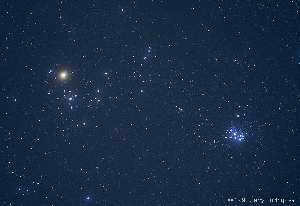

SOME INTERESTING INFORMATION
Saturday, January 14, 2012.
"First Orbit": the inaugural spaceflight viewed through the eyes of the first astronaut
Friday, January 13, 2012.
New in the encyclopedia
A glimpse into the celestial realm: the evolution of the telescope
The current largest telescopes are massive structures equipped with state-of-the-art detector systems and tools for correcting light streams, but their fundamental optical designs were primarily developed in the 17th century. In this regard, the telescope remains a very traditional instrument, despite the modern technology it incorporates, such as gigapixel digital sensors, high-resolution multitransparency spectrographs, and computerized correction of atmospheric wavefront distortions. Nonetheless, optical telescopes have made significant advancements over the past four centuries.
Astronomy and Astronautics News
A star of greater mass than the Sun has been detected 21/07 Astronomers have discovered the most massive star known. The mass of the luminary RMC 136a1 is equivalent to 265 times the mass of the Sun. The findings of the scientists, describing this unusual star, have been published in the Monthly Notices of the Royal Astronomical Society. The European Southern Observatory (ESO) has provided a press release summarizing the article. Scientists utilized the VLT (Very Large Telescope) array of telescopes in Chile to observe two star clusters – NGC 3603 and RMC 136a – which are located at distances of 44,000 and 165,000 light-years from the solar system, respectively. Specialists also incorporated data from these clusters obtained by the Hubble Telescope. more…
Astronomy: Understanding the Study of Celestial Bodies
Astronomy is a scientific discipline that delves into the intricacies of celestial bodies such as stars, planets, and meteorites. It encompasses the exploration of their location, structure, properties, origin, motion, and evolution, as well as the formation of systems like star clusters and galaxies within the vast expanse of the Universe.
Distinctive characteristics of astronomy as a scientific discipline
As a field of study, astronomy primarily relies on observation, as opposed to conducting experiments like physicists. The vast majority of our knowledge about celestial bodies comes from studying electromagnetic radiation. Only in the past four decades have we been able to directly investigate individual worlds, examining their atmospheres and analyzing the soil on the Moon and Mars.
Astronomy is closely connected to other scientific disciplines, particularly physics and mathematics, which provide the tools and methods used in astronomical research. However, astronomy also serves as a unique testing ground for various physical theories. In space, we encounter extreme conditions such as temperatures in the hundreds of millions of degrees and near absolute zero, as well as the vacuum of empty space and neutron stars. Recently, advancements in astronomy have been applied to fields like geology, biology, geography, and history.
What is the subject of study in the field of astronomy?
Astronomy is the scientific study of celestial objects such as the Sun, stars, planets, comets, meteoric bodies, nebulae, star systems, and the matter that exists in the space between these objects. It explores the structure, development, position, and motion of these celestial bodies, providing valuable insights into the overall structure and development of the universe. The term “astronomy” originates from the Greek words “astron” meaning star or luminary, and “nomos” meaning law. Within the field of astronomy, there are three main areas of focus that require ongoing investigation and analysis:
1. The study of the apparent and actual positions and motions of celestial bodies in space, including determining their size and shape.
2. The study of the physical structure of celestial bodies, including their chemical composition and physical conditions such as density and temperature on their surfaces and interiors.
3. The exploration of the origin, development, and potential future fate of individual celestial bodies and their systems.
The first area of study has been a focus of observation and analysis since ancient times, with the laws of mechanics playing a crucial role in understanding the movements of celestial bodies. As a result, we have a wealth of information about celestial bodies that are relatively close to Earth. However, our knowledge of the physical structure of celestial bodies is still limited. Significant advancements in this area have only been made in the past century, with many of the main questions remaining unresolved until recent years.
Branches of astronomy
Modern astronomy is divided into several interconnected sections, which can be considered as conventional. The primary divisions of astronomy include:
1. Astrometry – the study of measuring space and time. It encompasses: a) spherical astronomy, which develops mathematical techniques to determine the apparent positions and movements of celestial bodies using different coordinate systems, as well as the theory of regular changes in the coordinates of stars over time; b) fundamental astrometry, which aims to determine the coordinates of celestial bodies through observations, cataloging stellar positions, and determining the numerical values of crucial astronomical constants that account for the regular changes in star coordinates; c) practical astronomy, which provides methods for determining the orbits of celestial bodies based on their apparent positions and calculating the ephemerides (apparent positions) of celestial bodies from known elements of their orbits (images).
2. Theoretical astronomy offers methods to determine the orbits of celestial bodies based on their apparent positions and calculate the ephemerides (apparent positions) of celestial bodies using the known elements of their orbits (inverse problem).
3. Celestial mechanics investigates the laws of motion of celestial bodies under the influence of gravitational forces, determines the masses and shapes of celestial bodies, and studies the stability of their systems. These three sections primarily address the first problem of astronomy and are often referred to as classical astronomy.
4. Astrophysics examines the structure, physical properties, and chemical composition of celestial objects. It is divided into: a) practical astrophysics, which focuses on the development and application of practical methods, instruments, and devices for astrophysical research; b) theoretical astrophysics, which explains observed physical phenomena based on the laws of physics. Various branches of astrophysics employ specific investigation methods, which will be discussed in section 101.
5. Stellar astronomy studies the patterns of spatial distribution and motion of stars, stellar systems, and interstellar matter, taking into account their unique physical characteristics. These two sections primarily address the second problem of astronomy.
6. Cosmogony explores the origin and evolution of celestial bodies, including our Earth.
7. Cosmology investigates the general patterns of structure and development of the universe.
Based on the knowledge acquired about celestial bodies, the last two sections of astronomy address its third problem.
Renowned Astronomers and Astrophysicists
Friedrich Wilhelm BESSEL (1784 – 1846) was a German astronomer and surveyor. He developed the theory and methods for accounting for instrumental and personal errors in astronomical observations. He was one of the first to measure stellar parallax and determined the elements of the Earth’s spheroid, which were used for approximately 100 years.
Hans Albrecht BETE (b. 1906) is a theoretical physicist. He emigrated from Germany in 1933 and has been in the USA since 1935. He identified the most probable cycles of thermonuclear reactions in stars.
Tycho BRAGE (1546 – 1601) was a Danish astronomer known for reforming practical astronomy. He accurately determined the positions of celestial objects for over 20 years. He discovered two inequalities in the motion of the Moon and proved that comets are celestial bodies farther away than the Moon. He compiled a catalog of stars, refraction tables, and other important contributions. Kepler derived the laws of planetary motion from Brage’s observations of Mars.
Galileo Galilei (1564 – 1642) was an Italian scientist and one of the founders of exact natural science. He constructed a telescope with 32-fold magnification and made several important discoveries, including mountains on the Moon, four satellites of Jupiter, phases of Venus, and spots on the Sun. He vigorously defended the heliocentric system of the world and was controversially tried by the Inquisition.
Edmund GALLAY (1656-1742) was an English astronomer and geophysicist. He created the first catalog of stars in the Southern sky and discovered the proper motion of stars. He calculated the orbits of more than 20 comets and accurately predicted the reappearance of Halley’s Comet in 1682, proving the existence of periodic comets.
Georgy Antonovich GAMOV (George) (1904 – 1968) was an American theoretical physicist. He proposed the “hot universe” hypothesis.
Einar Gertsprung (1873 – 1967) was an astronomer born in Denmark and worked in Germany and the Netherlands. He introduced the classification of stars into giants and dwarfs and published the first diagram of stellar magnitude-color index for the Pleiades and Hyades clusters.
William Herschel (Friedrich Bwuhelm) (1738 – 1822) was an English astronomer and the founder of stellar astronomy. He studied star clusters, double stars, and nebulae. He constructed the first model of the Galaxy, determined the motion of the Sun in space, and discovered Uranus and its two satellites, as well as two satellites of Saturn.
Hipparchus (c. 180 or 190 – 125 BC) was an ancient Greek astronomer and one of the pioneers of astronomy. He improved the method for calculating the apparent motion of the Sun and the Moon, determined the distance to the Moon, and cataloged the positions of 850 stars. He introduced geographical coordinates and discovered precession.
Christian Dopler (1803 – 1853) was an Austrian physicist and astronomer. He discovered the effect that was later named after him and proposed using it to measure the velocities of double stars.
Johann Kepler (1571 – 1630) was a German astronomer and one of the founders of modern astronomy. He discovered the laws of planetary motion and used them to develop planetary tables. He also laid the foundations of the theory of eclipses and invented a telescope with double-convex lenses for the objective and eyepiece.
Nikolai Kopernik (1473 – 1543) was a Polish astronomer and the creator of the heliocentric system of the world. He revolutionized natural science by rejecting the long-held belief in the central position of the Earth. He explained the apparent motions of celestial bodies by the rotation of the Earth on its axis and the revolution of the planets, including the Earth, around the Sun.
Isaac Newton (1643 – 1727) was an English mathematician, mechanic, astronomer, and physicist. He discovered the law of universal gravitation and formulated the theory of celestial motion, establishing the foundations of celestial mechanics. He also constructed a reflecting telescope.
Arno Allan Penzias (b. 1933) is an American radiophysicist and astrophysicist. He discovered the cosmic microwave background radiation, also known as relic radiation.
Claudius Ptolemy (c. 90 – c. 160) was an ancient Greek scientist. He developed a mathematical theory of planetary motion based on the belief in a stationary Earth, which allowed for the calculation of their positions in the sky. Together with his theories on the motion of the Sun and the Moon, it formed the Ptolemaic system of the world.
Henry Norris Ressell (1877 – 1957) was an American astronomer. He extensively studied the relationship between luminosity and spectral classes of stars and formulated one of the earliest theories of stellar evolution.
Vasily Yakovlevich Struve (1793 – 1864) was an astronomer and geodesist, known as the founder and first director of the Pulkovo Observatory. He made the first determination of stellar parallax and established the presence of light absorption in interstellar space.
William Alfred Fauler (b. 1911) is an American physicist who has made significant contributions to the theory of the expanding universe and the theory of nuclear reactions in stars.
Josef Fraunhofer (1787 – 1826) was a German physicist. He detailed the absorption lines in the spectrum of the Sun, which are now named after him.
Edwin Powell Hubble (1889 – 1953) was an American astronomer. He proved that extragalactic nebulae are actually galaxies, estimated the distances to some of them, developed the basis for their structural classification, and discovered the regularity of galaxy dispersion.
Stephen Hocking (b. 1942) is an American astrophysicist known for proving the possibility of vacuum instability in the gravitational field of a black hole.
Anthony Huish (b. 1924) is an English radio astronomer. He studied the solar corona, interplanetary space, and the interstellar medium using the flicker method. Under Huish’s direction, pulsars were discovered.
Subrahmanyan Chandrasekhar (b. 1910) is an American theoretical astrophysicist. He has conducted fundamental theoretical studies on physical processes that play a crucial role in the structure and evolution of stars.
Karl Schwarzschild (1873 – 1916) was a German theoretical physicist and astronomer. He compiled a catalog of photographic magnitudes for over 3500 stars and developed the theory of radiative equilibrium as applied to the atmospheres of stars. He also obtained an exact solution to Einstein’s equations of general relativity.
Arthur Stanley Eddington (1882 – 1944) was an English astrophysicist. He was the first to calculate models of stars in radiative equilibrium. He experimentally confirmed the deflection of light in the gravitational field of the Sun, as predicted by the general theory of relativity.
Albert Einstein (1879 – 1955) was a theoretical physicist and the creator of the special and general theories of relativity, which provided a more accurate understanding of the processes of reality compared to classical mechanics.
The Origin of the Past
Astronomy is the oldest of all natural sciences, having been extensively developed by the Babylonians and Greeks, surpassing physics, chemistry, and engineering. In ancient times and the Middle Ages, the study of astronomy was not solely driven by scientific curiosity, but also by its necessity for astrology. The construction of observatories and precision instruments was a significant investment made by those in power, who expected not only recognition as patrons of science but also astrological predictions as a return. Only a small number of surviving books from that era demonstrate the purely theoretical interest of scientists in astronomy, as most of them consist of tables and rules for practical use, rather than observations or theories. Ptolemy’s Almagest is one of the exceptions, although he also wrote the astrological manual Tetrabiblos.
The earliest recorded astronomical observations, with undisputed authenticity, date back to the 8th century BC. However, it is known that as early as 3000 BC, Egyptian priests noticed the correlation between the floods of the Nile, which played a crucial role in the country’s economy, and the appearance of the star Sirius in the east before sunrise, after being hidden for about two months in the sun’s rays. Based on these observations, the Egyptian priests accurately determined the length of the tropical year.
Ancient China, around 2000 BC, had a profound understanding of the apparent movements of the Sun and Moon, enabling Chinese astronomers to predict solar and lunar eclipses. Astronomy, like other sciences, originated from practical human needs. Nomadic tribes in primitive societies relied on celestial bodies such as the sun, moon, and stars for navigation during their wanderings. Similarly, early farmers needed to consider the different seasons for their agricultural activities and noticed that the change of seasons correlated with the noon height of the sun and the appearance of certain stars in the night sky. As human society advanced, the need for measuring time, chronology, and creating calendars emerged.
Initially, observations of celestial bodies were made without any instruments, and while they were not highly accurate, they served the practical needs of the time. These observations formed the foundation of astronomy. As human society developed further, astronomy faced new challenges that required more advanced observation methods and precise calculations. Gradually, simple astronomical instruments were invented, and mathematical methods for processing observations were developed.
In ancient Greece, astronomy had already become one of the most advanced sciences. Greek astronomers, notably Hipparchus in the 2nd century BC, created a geometric theory of epicycles to explain the apparent movements of the planets. This theory formed the basis of Ptolemy’s geocentric world system in the 2nd century AD. Although fundamentally incorrect, Ptolemy’s system allowed for approximate calculations of planetary positions in the sky and satisfied practical needs for several centuries.
Ptolemy’s world system marked the end of the ancient Greek astronomy era. The development of feudalism and the influence of the Christian religion led to a significant decline in the natural sciences, including astronomy, in Europe for many centuries. During the dark Middle Ages, astronomers focused solely on observing the apparent motions of the planets and reconciling them with Ptolemy’s geocentric system.
Meanwhile, rational development of astronomy continued among Arabs, Central Asians, and Caucasians. Prominent astronomers such as Al-Battani (850-929), Biruni (973-1048), and Ulugbek (1394-1449) made significant contributions. The emergence and establishment of capitalism in Europe, replacing feudal society, led to further advancements in astronomy. The era of great geographical discoveries in the 15th and 16th centuries witnessed rapid progress in astronomy. The bourgeoisie class, interested in exploring and exploiting new lands, organized numerous expeditions that necessitated more accurate methods of orientation and time calculation than the Ptolemaic system could provide. The development of trade and navigation demanded an improvement in astronomical knowledge, particularly in the theory of planetary motion. The combination of evolving productive forces, practical requirements, and accumulated observational data set the stage for a revolution in astronomy, led by the great Polish scientist Nicolaus Copernicus (1473-1543). Copernicus developed the heliocentric system of the world, which he published in the year of his death.
Copernicus’ teachings marked the beginning of a new stage in astronomy. Kepler discovered the laws of planetary motion between 1609 and 1618, and in 1687, Newton published the law of universal gravitation.

Copernicus was a significant figure in the field of astronomy.
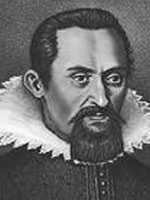
Kepler is the name of a famous astronomer.
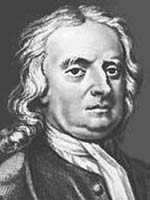
Isaac Newton

